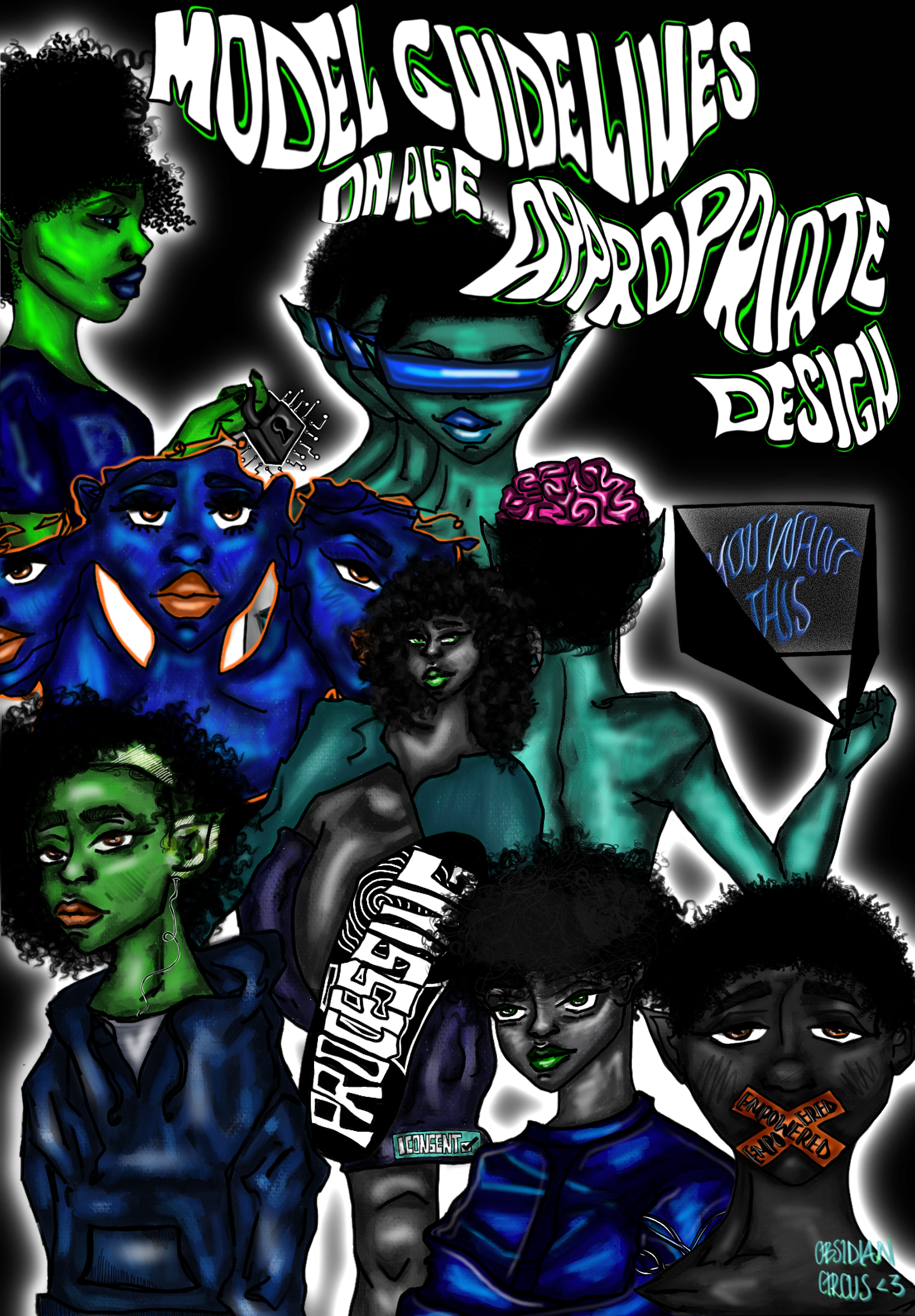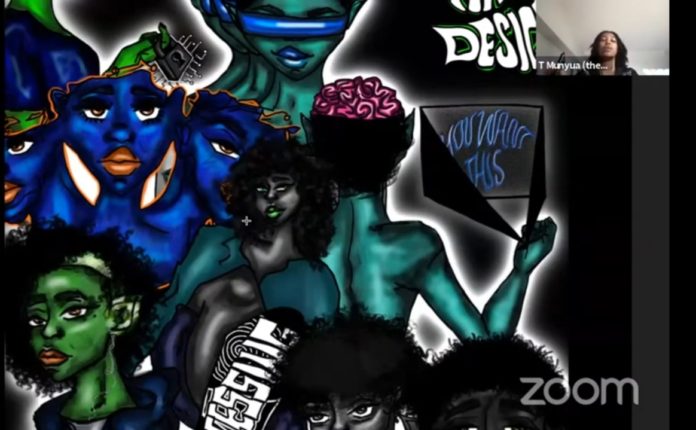By Sharon Kiburi
Nairobi, Kenya: Age-appropriate design for online services is a model guideline that is artistically expressed by an artist to protect children online.
T Munyua is a 21-year-old third-year Intellectual Property student at the University of Birmingham, (pronouns they and them) started this guideline for children online, “ I want my work to be very neutral; hence me having fluid gender takes away pre assumptions notions that come with being relating with one’s gender with their work.”

Munyua was born and raised in Kenya and moved to the United Kingdom for university education.
The Model Guidelines on Age-Appropriate Design for Online Services, which are the first of their kind in Africa, are a set of principle statements and recommendations on ensuring that online services appropriately safeguard children’s privacy and personal information.
They are a set of Guidelines to consider, consult and benchmark against when designing, structuring, and assessing online services with children’s privacy rights in mind. The Model Guidelines take a proactive approach in addressing the safety and privacy of children online by focusing on the design stage of online products and services.
The Guidelines have been developed for all organizations (both public and private) interested in regulating online services with children’s privacy and South Africa’s data protection and privacy requirements in mind.
Continuing, Munyua says, “I got into law because of units I had taken on critical analysis and human rights work. In general, the law is fascinating; it opened me up to listening skills, writing, and arguments. A few years into law school, Intellectual property law (IP) caught my eye because, as an artist, intellectual property law is very vital to how it intersects with my work.”

Model Guidelines: Detailing on the Art
“I wanted the art to be vibrant, animated characters; I was excited to break down the regulations in an artistic expressive way that is accessible manner.” Said Munyua.
The character representation for regulations are as follows:
Consider the Best Interest of the Child
- A character with a very neutral expression, child’s best interests should be of primary concern, and this character represents a child who is unattended to and emotionally absent.
Adequate Consent and a Minimal Processing Footprint
- The small, unnoticeable “I consent” tick box on the corner of the character’s shorts represents the failure to prioritize clear consent practices. Frequently adequate consent is not collected, and online service providers lazily collect consent as a formality to protect themselves rather than the user’s wellbeing.
- Juxtaposing imagery of a small, inadequate consent button and an enlarged footprint, the shoe of this character is symbolic of the issue at hand: unnecessarily large processing footprints.
Be Purposeful
- I equated a lack of purpose to a lack of clarity and blatant misdirection. The three-headed character shows this misdirection via the faces focusing on multiple points and illustrates a lack of transparency for how online service providers collect data and information.
Restraint in Use of Information for Other Purposes
- The character is in a straitjacket and has criminal intentions, judging by their facial expression. I see this as online service providers who abide by this guideline for self-preservation and their validity as a platform; however, they continue to plot the use of loopholes allowing them to deviate and use user data for other purposes.
Ensure High-Quality Information
- The Afro-futuristic glasses emphasize quality in vision but have a dual meaning in that glasses are also linked to perception. If online service providers fail to ensure high-quality information is collected, this could completely skew how the data subject is perceived.
Transparent and Accessible Privacy Practices for Children
- The figure has a visible brain and projection of a screen that reads, “you want this”. This is a note on the nudging technique used by online service providers as a psychologically manipulative technique that urges children to make certain data-related decisions online.
Dedicated Security Safeguards
- The character is holding a padlock very loosely and nonchalantly. This imagery is symbolic of the disregard for proper security practices and undedicated and unreliable safeguarding.
Children Must be Enabled to Participate in the Management of their Personal Information
- The character holds an upset and distraught expression and has tape across their mouth that reads “empowered”. I wanted this character to explain that, in theory, children and users are empowered to manage their personal information online; however, this is not always the case in practice. In this case, the idea of empowerment is illusory.
Beyond the law, Munyua is an independent artist; Munyua does creative poetry writing and visual art digital & canvas. Obsidian Circus is a collection of Munyua’ss artwork and what they have worked on in visual Art and written poetry on their website.
“I felt it would be nice to put the guidelines in a way that would number one be accessible for everyone, two in another form beyond written legal jargon.”
It is paramount to understand the age-appropriate and design as things to look out for when they click on a game or social media platform.
“Art represents the model guideline aesthetically. It leaves room for interpretation and diverse comprehension. It brings ease and balance in understanding the model guidelines.”
Munyua concludes by saying, “Art is vast and diverse; it is writing, music, visual art, and multimedia. Hence incorporating Art in the language of law makes it more inclusive. It can aid in the comprehension of regulations and policies. Art makes it easier to express, address, and legislate laws since it gives access to more people in ways they can comprehend.”














